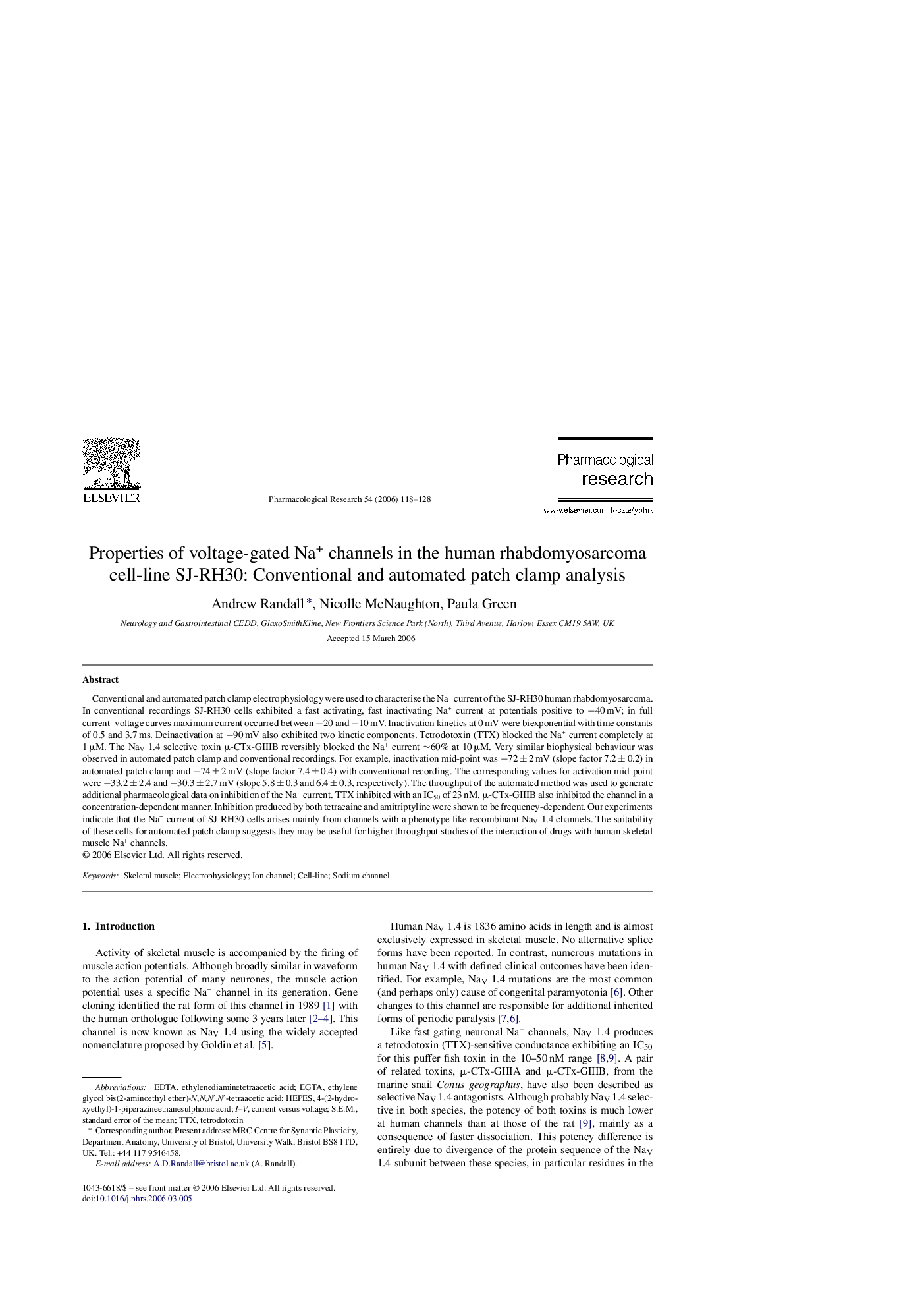| Article ID | Journal | Published Year | Pages | File Type |
|---|---|---|---|---|
| 2561603 | Pharmacological Research | 2006 | 11 Pages |
Abstract
Conventional and automated patch clamp electrophysiology were used to characterise the Na+ current of the SJ-RH30 human rhabdomyosarcoma. In conventional recordings SJ-RH30 cells exhibited a fast activating, fast inactivating Na+ current at potentials positive to â40 mV; in full current-voltage curves maximum current occurred between â20 and â10 mV. Inactivation kinetics at 0 mV were biexponential with time constants of 0.5 and 3.7 ms. Deinactivation at â90 mV also exhibited two kinetic components. Tetrodotoxin (TTX) blocked the Na+ current completely at 1 μM. The NaV 1.4 selective toxin μ-CTx-GIIIB reversibly blocked the Na+ current â¼60% at 10 μM. Very similar biophysical behaviour was observed in automated patch clamp and conventional recordings. For example, inactivation mid-point was â72 ± 2 mV (slope factor 7.2 ± 0.2) in automated patch clamp and â74 ± 2 mV (slope factor 7.4 ± 0.4) with conventional recording. The corresponding values for activation mid-point were â33.2 ± 2.4 and â30.3 ± 2.7 mV (slope 5.8 ± 0.3 and 6.4 ± 0.3, respectively). The throughput of the automated method was used to generate additional pharmacological data on inhibition of the Na+ current. TTX inhibited with an IC50 of 23 nM. μ-CTx-GIIIB also inhibited the channel in a concentration-dependent manner. Inhibition produced by both tetracaine and amitriptyline were shown to be frequency-dependent. Our experiments indicate that the Na+ current of SJ-RH30 cells arises mainly from channels with a phenotype like recombinant NaV 1.4 channels. The suitability of these cells for automated patch clamp suggests they may be useful for higher throughput studies of the interaction of drugs with human skeletal muscle Na+ channels.
Keywords
Related Topics
Health Sciences
Pharmacology, Toxicology and Pharmaceutical Science
Pharmacology
Authors
Andrew Randall, Nicolle McNaughton, Paula Green,
